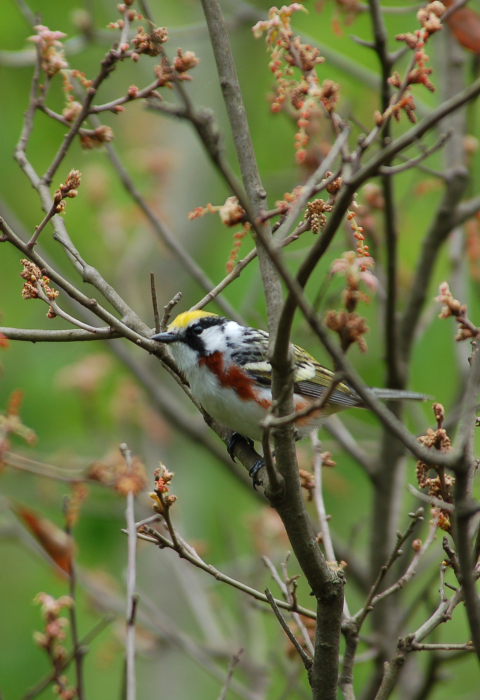State Wildlife Management Area Project
New Jersey Audubon Society and the state Division of Fish and Wildlife jointly developed a plan that uses timber harvests to create much-needed diversity in forest age classes at Sparta Mountain WMA, Sussex and Morris counties, northern New Jersey. Said John Cecil of New Jersey Audubon: “Diversifying the age of the forest will make it more resilient to insect pests and disease and provide more resources for wildlife.”
Diversifying the age of the forest will make it more resilient to insect pests and disease and provide more resources for wildlife.
Timber Harvests a Key Tool
Starting in 2010, conservationists have made seed-tree regeneration cuts and shelterwood cuts on more than 90 acres, creating patches of young forest scattered through the older woods. New young growth in these openings attracts a range of birds, including ruffed grouse, American woodcock, and songbirds.
Tree species have become more diverse, with tulip poplar, black cherry, aspen, and gray birch increasing. Native plants sprout from seeds lying dormant in the soil, activated by increased sunlight reaching the ground: grasses, sedges, goldenrod, mayapple, wild geranium, blackberry, witch hazel, and many others, which provide hiding cover and food for wildlife, including nectar for pollinators.
Cutting trees to open the forest canopy has more than doubled the average total number of bird species detected during spring breeding bird surveys in the fresh habitat compared to the average number of species found in the older closed-canopy forest elsewhere on the WMA.
Reinvigorating the Forest
Sharon Petzinger, a zoologist with the Division of Fish and Wildlife, conducts annual breeding bird surveys. She points out that some people believe the tree-cutting amounts to “killing off nature. But we’re actually bringing life back by reinvigorating the forest.”
Research has shown that dense young trees and shrubs attract birds that require such habitat to breed. They also draw in species that breed in mature forest, which bring their fledglings to the open areas to feed on the increased insects, fruits, and seeds there, foods that help the young birds grow and mature, and build up body reserves for migration.
One rare and declining songbird that may find the new habitat on Sparta Mtn. WMA is the golden-winged warbler. This colorful bird breeds among shrubs and young trees, then takes its young to nearby older forest to feed – a strategy that's the reverse of what many other songbirds do.
Learn more about the Sparta Mtn. WMA Forest Stewardship Plan.
How to Visit
Walkers can access the different young forest sites from several parking areas, including the main one, located off Edison Rd. at the Edison Monument. From there, trails head north and east to five managed areas. A map shows parking areas and managed tracts.


